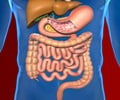According to a study patients who had surgery for periampullary cancer and received chemotherapy had a statistically significant survival benefit.

John P. Neoptolemos, M.D., of the University of Liverpool, England, and colleagues conducted a study to determine whether adjuvant chemotherapy (fluorouracil or gemcitabine) provides improved overall survival following resection. The randomized controlled trial (July 2000-May 2008) was conducted in 100 centers in Europe, Australia, Japan, and Canada. Of the 428 patients included in the primary analysis, 297 had ampullary, 96 had bile duct, and 35 had other cancers. One hundred forty-four patients were assigned to the observation group, 143 patients to receive folinic acid via intravenous bolus injection followed by fluorouracil via intravenous bolus injection administered 1 to 5 days every 28 days, and 141 patients to receive intravenous infusion of gemcitabine once a week for 3 of every 4 weeks for 6 months.
Two hundred forty-four patients (57 percent) had died at the time of analysis, 88 (61 percent) in the observation group, 83 (58 percent) in the fluorouracil plus folinic acid group, and 73 (52 percent) in the gemcitabine group. For the primary analysis, in the observation group, the median (midpoint) survival was 35.2 months and in the chemotherapy group 43.1 months.
The unadjusted primary analysis of the primary outcome of survival did not demonstrate a significant benefit for adjuvant chemotherapy. "Multivariate analysis, correcting for prognostic variables, found a statistically significant survival benefit to chemotherapy and specifically for gemcitabine compared with observation, notwithstanding the better safety profile compared with fluorouracil plus folinic acid, but these results should be considered hypothesis generating. There were different survival outcomes by tumor type, although age, poorly differentiated tumor grade, and lymph node involvement were also independent survival factors," the authors write.
"Although this study found support for the use adjuvant chemotherapy to improve survival in patients with periampullary cancers, this effect was modest, indicating a need for further improvements and warranting the testing of combination chemotherapies.
Source-Newswise















